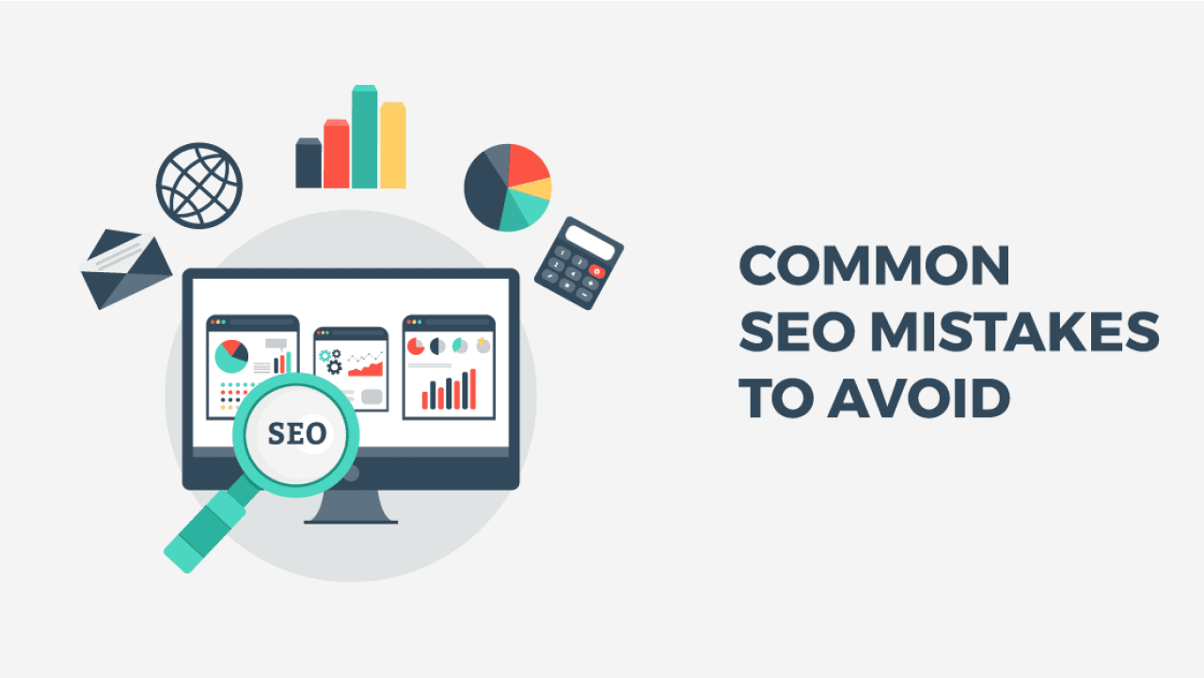Avoid SEO mistakes with these 6 steps

When a company learns how to do SEO effectively, they could be in for a winner in terms of receiving more organic traffic and potentially more conversions. However, while SEO marketing is one of, if not, the most effecting thing you can do to your website to get traffic, there are als
Here are 5 of the common SEO mistakes that could seriously harm your business:
1. Using the Wrong Keywords
Keywords are basically the glue of SEO. The crawlers that Google uses to scan every website will be checking through the keywords that are used on a website in order to understand what purpose your website serves.
Any business should take time, before launching their website, to undertake keyword research and find out exactly what words they should be using to rank. Google AdWords will be able to help with keyword research.
2. Not Taking Advantage of Link Building
Backlinks are crucial to helping your page rank. By using the correct anchor text offsite, your page will rank even higher on Google for certain keywords.
When websites link back to your homepage, it tells Google that you’re a valuable source of information and you either provide great content, or you sell great products.
You can take advantage of this by offering expert opinions to journalists by searching for the hashtag ‘JournoRequest’, or, offering to guest post on other publications and websites.
Both of these can be cost-free too – which is another great bonus!
3. Creating Poor Quality Content
Every business should have a blog, for their chance to shout about everything they’ve done and talk about their products. The phrase “content is king” is absolutely true, and it will allow a business to differ from their competitors and also define their value proposition.
Quality content isn’t just great blog posts (which, if they’re super great, will earn authoritative back links), but it is also interactive quizzes, photos and videos. Videos are a great way to keep a user on a page for longer.
Consumers want answers to their questions, so if your brand is answering their question over on the blog, the chances are they will find your page and brand. It is important to share your great content over on social media too.
4. Not Optimizing an Image
If there is a photo of a black cat on your website, then make sure you optimise it to say that it is a black cat. When Google crawls your page, it won’t be able to recognise images and it will of course be able to recognise the text that says what the image is.
Optimising images will mean that you could potentially get organic traffic from the likes of Google Images. Companies that haven’t optimised images on their website could potentially be losing a lot of custom.
5. Focusing Too Much on SEO and Not Enough on Your Audience
Focusing on your audience more than SEO is of big importance. A lot of businesses end up keyword stuffing and writing optimised content that doesn’t seem relatable and/or won’t keep a user on a page for a long period of time.
Keep your main focus on helping out your audience or providing great content that they will want to read. This will naturally gain social shares, and the bounce rate will be increased, indicating to Google that the piece is reliable, trustworthy and great content without being completely optimised for search engines.
6. Improper Indexing of Your Pages
What it is: We all want Google to rank our pages higher. But Google’s hands can’t rank what its bots can’t see.
The best way to see if you have any indexation issues is to use Google Search Console.
In the absolute vast majority of cases, your indexation problem will be internal: perhaps the page hasn’t been allowed in your robots.txt file by a developer working on the page, or a NOINDEX tag has been added to a page.
A DNS error or a 404 error is the most likely culprits for your pages not being indexed, and Search Console will show as much in its “Error” column.
Simply removing the NOINDEX tag manually for the pages in question, or allowing them in robots.txt, and allowing some time for Google bot to recrawl in peace, will get those pages to show up without a hitch.
If you end up in a situation where the entirety of your website is patently crawlable, with index tags, but still the actual Google search gives you only a fraction of the results you expect – you might have been hit by a manual action.
Start the recovery process by running a full web site-wide audit.
Using an audit tool, you’ll get a nice layout of your website’s SEO health, with all of the pages that are and aren’t indexed in there.
See what pages are violating Google’s best practices, and which simply didn’t have the correct tagging and/or robots instructions. It’s generally a good practice to check your website for crawling issues every month or so.
